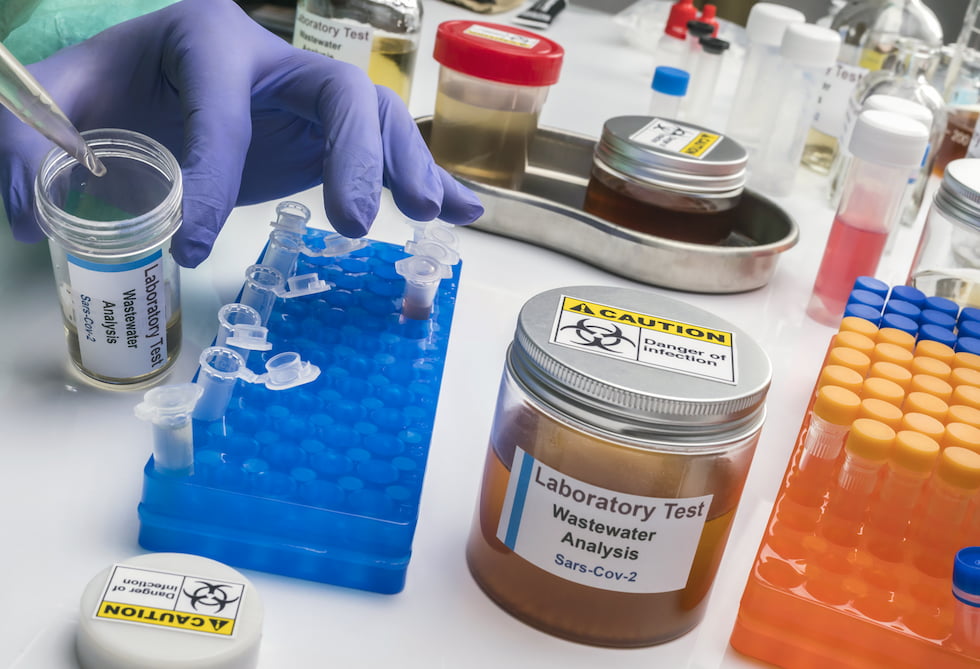
As a potential tool to track the number of symptomatic and asymptomatic coronavirus cases in communities, the Environmental Protection Agency (EPA) is testing sewage.
This will be a six-month pilot project in conjunction with the city of Cincinnati, Ohio, according to a Bloomberg news report last week. Jay Garland, senior scientist in the EPA’s Office of Research and Development, that the pilot project would add to Ohio’s surveillance network for virus cases, Bloomberg reported.
According to the EPA website, “Researchers at EPA and the CDC [the Centers for Disease Control] are developing and applying methods for measuring SARS-CoV-2 levels in wastewater. Once developed, the methods will be used to determine infectivity, persistence, and treatment efficacies related to SARS-CoV-2 in wastewater.”
The EPA website says that the monitoring may help public health officials develop an early warning system.
“With an infectious disease like COVID-19, people may be contagious before they show any symptoms,” the EPA website states. “Preliminary research indicates that monitoring wastewater for the presence of SARS-CoV-2 may be useful as a sensitive early indicator of low levels of infections in the community. Having an early warning system to alert public health officials about infection in a community would be helpful. Likewise, monitoring SARS-CoV-2 in wastewater may also provide an indication of decreasing levels of infection within a community.”
Concern for Wastewater Workers
The EPA website says that “while the risk to utility workers is considered low, there is still value in measuring the levels of virus in wastewater to better understand potential risks from exposure to untreated sewage.”
Whether personal protection equipment (PPE) requirements or other safety standards for wastewater workers should be revised due to COVID-19 has been taken up by a panel convened by the Water Environment Federation (WEF). The experts, convened at the end of April, was brought together to examine the biological hazards that wastewater workers may be facing during the coronavirus pandemic, and to evaluate whether safety precautions already in place need to be adjusted.
The panel is expected to provide input to the Centers for Disease Control (CDC), Occupational Safety and Health Administration (OSHA), Environmental Protection Agency (EPA), and the World Health Organization (WHO), among other agencies.
“The top priority of the Water Environment Federation is always to ensure the safety and health of the frontline people in the water workforce, who protect our communities not just during the coronavirus pandemic but every single day,” said WEF President Jackie Jarrell in an April press release. “In keeping with the WEF tradition of educational and technical excellence, the blue-ribbon panel will make certain that our information on hazards and safety and the guidance of organizations such as the WHO, CDC, OSHA, and EPA are based on the latest evidence and absolute best science.”
The CDC website explains that while the virus that causes COVID-19 has been found in untreated wastewater, “researchers do not know whether this virus can cause disease if a person is exposed to untreated wastewater or sewerage systems. There is no evidence to date that this has occurred. At this time, the risk of transmission of the virus that causes COVID-19 through properly designed and maintained sewerage systems is thought to be low.”
The CDC also states that researchers believe standard municipal and individual septic system wastewater treatment practices should inactivate the virus that causes COVID-19.
Recommendations from the CDC are that standard practices should be followed in wastewater treatment facilities, including:
- engineering and administrative controls
- hygiene precautions
- specific safe work practices
- personal protective equipment (PPE)

